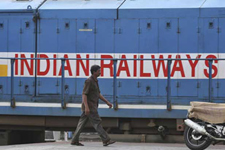Debt and Investment survey: Average value of assets owned by household was Rs 10 lakh for rural areas in 2013
By TIOL News Service
NEW DELHI, DEC 22, 2014: THE National Sample Survey Office (NSSO) has released the key indicators of debt and investment in India, generated from the data collected during January 2013 to December 2013 in its 70 th round survey. NSS All India Debt and Investment Survey (AIDIS) are conducted decennially starting from 26 th round (1971-1972) and the last survey was conducted in NSS 59 th round (January to December, 2003).
The All India Debt and Investment Survey (AIDIS) aims at generating average value of assets, average value of outstanding debt per household and incidence of indebtedness, separately for the rural and urban sectors of the country, for States and Union Territories, and for different socio-economic groups. These indicators are amongst the most important measures of the indebtedness of the respective domains of the population and are crucial inputs for estimation of credit structure. The detailed results of this survey on debt and investment are planned to be brought out by the NSSO through a set of four main reports. In order to make available the salient results of the survey, well in advance of the release of its reports, for use in planning, policy formulation, for decision support and as input for further statistical exercises, the NSSO has released the key indicators.
The key indicators are based on the Central Sample consisting of 4,529 villages in rural areas and 3,507 urban blocks spread over all States and Union Territories of the country.
The required information was collected from a set of sample households through two visits to each household. On considerations of operational necessity, the survey period of the first visit was seven months from January 2013 to July 2013 and the survey period of the second visit was of five months duration from August to December 2013. The total number of households from which information was collected, was 62,135 in rural India and 48,665 in urban India in Visit 1 and 61,650 in rural India and 46,771 in urban India in Visit 2.
The average value of assets (AVA), percentage of indebted households, representing incidence of indebtedness (IOI) and average amount of debt (AOD) per household and ‘debt-asset ratio' which is defined as the average amount of debt outstanding for a group of households expressed as a percentage of the average value of assets owned by them as on 30.06.2012 for rural and urban areas of India are presented in Table below:
|
Table : AVA, IOI and AOD for rural and urban India
|
|
|
sector
|
AVA (Rs.) per household
|
AOD per household (Rs.)
|
IOI (%)
|
Debt-Asset Ratio(%)
|
|
(1)
|
(2)
|
(3)
|
(4)
|
(5)
|
|
rural India
|
1006985
|
32522
|
31.44
|
3.23
|
|
urban India
|
2285135
|
84625
|
22.37
|
3.70
|
Some salient findings of (i) Household Assets, (ii) Household Indebtedness and (iii) Fixed Capital Expenditure obtained from the survey are as follows:
++ Around 98% of rural households and around 94% of urban households in India owned some physical and financial assets as on 30.06.2012. Average value of assets (AVA) owned by a household was Rs. 10.07 lakh for the rural areas and Rs. 22.85 lakh for the urban areas.
++ L and and building were found to be the two major components of household assets. In the rural areas, land and buildings together, accounted for 94% share in the total value of assets at the national level - with land 73 percentage points and buildings 21 percentage points. In the urban areas, land and buildings together, accounted for about 92% share in the total value of assets - with land 47 percentage points and buildings 45 percentage points.
++ A bout 31% of the rural households and 22% of the urban households reported debt (cash loan) outstanding as on 30.6.12. The average amount of debt (AOD) for a rural household was Rs. 32,522 and that for an urban household was Rs. 84,625.
++ A s on 30.6.12, the `debt-asset` ratio at the all-India level was 3.7% for urban areas and 3.23% for rural areas.
++ Around 31% of the rural households and 15.2% of the urban households reported fixed capital expenditure and the average amount of expenditure for fixed capital formation is Rs. 10,717 in rural and Rs. 14,493 urban India.
++ Among the social groups, in rural India , IOI (16.9%) was lowest for ST households and highest (35.7%) for OBC households. On the other hand, AOD was lowest for ST households (Rs. 9,610) and highest for ‘Others' households (Rs. 44,565). In urban India, the lowest IOI was again that of the ST households (16.4%) and the highest that of OBC (26.0%). But the IOI for ‘others' was only 19% – lower than that of SC. The relative position of the four social groups, in terms of AOD, was found to be the same as in the rural areas.
++ The results of the survey show that non-institutional agencies played a major role in advancing credit to the households, particularly in rural India. The non-institutional agencies had advanced credit to 19% of rural households, while the institutional agencies had advanced credit to 17% households. In urban India, the picture is different; the institutional agencies appear to have played a major role, advancing credit to 15% of households against 10% by non-institutional agencies.
++ The indebtedness as on 30.06.2012, with simple interest is predominant for both rural (20.3%) and urban (13.4%) households. IOI for ‘interest-free loans' (mainly taken from friends and relatives) was also quite significant - with 6.5% in the rural and 4.4% in the urban.
++ The institutional agencies played a significant role in providing credit to the households with a moderate rate of interest (6% to 15%) for both rural and urban area. It is observed that among Total Cash Dues (TCD) funded by the institutional agencies, about 89% in the rural and 92% in the urban were provided at less than 15% interest rates. On the other hand, the non-institutional agencies provided a significant amount of its total loans to households at an interest as high as 20% or above, the share of such loans to total loans by the non-institutional agencies was 69% in the rural and 58% in the urban.
++ About 65% of total amount of cash debt outstanding on 30.06.12 among rural households and 52% of the same among urban households had been contracted for a relatively shorter duration of less than 2 years and meagre 2% for a period of 10 years or more for both the sectors.
Detailed publication on above Key Indicators is also available on the website of the Ministry of Statistics and Programme Implementation. www.mospi.gov.in















